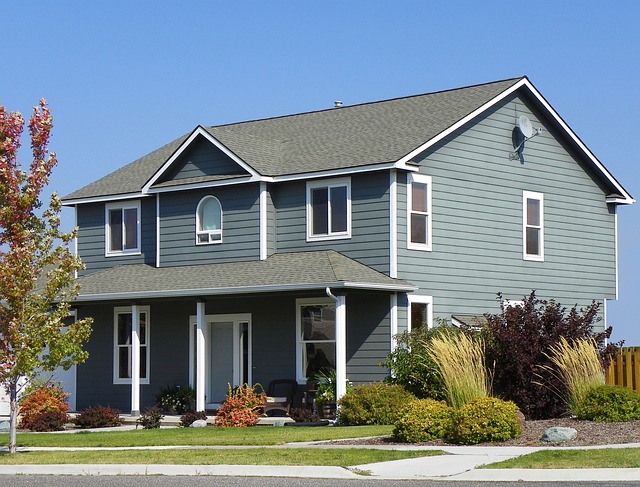Executive Condos (ECs) in Singapore serve as a middle-ground housing option for young couples and families, bridging the gap between public and private housing. The pricing of ECs is influenced by factors such as location desirability, development scale, available amenities, and market demand. Unlike private condominiums, ECs come with a resale levy after a certain period, which affects their affordability compared to non-subsidized HDB flats but keeps them competitive with private properties. The age of the project, with newer developments offering modern facilities and greater potential for value increase, also impacts pricing. Government policies, including income ceilings and loan-to-value limits, play a crucial role in ensuring ECs remain accessible to eligible buyers while maintaining market stability. Prospective EC buyers must consider these factors, along with the influence of local amenities like proximity to MRT stations and the impact of new project launches on regional property values. HDB flat prices are similarly affected by factors such as estate maturity, location, size, block condition, and eligibility for upgrading programs. Both ECs and HDB flats are integral to Singapore's housing market, with their valuations reflecting a complex interplay of supply, demand, amenities, and policy influences. Buyers must navigate these dynamics to make informed decisions in this dynamic real estate landscape, with Executive Condo being a key consideration for those looking for a cost-effective alternative to both public and private housing options. Keywords: Executive Condo, Singapore housing market, property pricing, residential real estate.
Considering the housing landscape in Singapore, potential homeowners often ponder between Executive Condos (ECs) and HDB flats. This article dissects the pricing nuances of ECs versus HDBs, offering a comprehensive analysis that spans dynamics, affordability, regional price variations, and historical trends, alongside factors influencing the market. By delving into these aspects, homebuyers can make informed decisions tailored to their financial situation and preferences.
- Understanding the Dynamics of Executive Condo (EC) Pricing
- The Affordability Factor: How ECs Offer a Competitive Edge Over HDBs
- Geographic Variations: Analyzing EC and HDB Prices Across Different Regions in Singapore
- Historical Price Trends of Executive Condos vs Public Housing
- Factors Influencing the Pricing of Executive Condos and Public Housing Bodies (HDBs)
Understanding the Dynamics of Executive Condo (EC) Pricing

Executive Condominiums (ECs) in Singapore offer a unique housing option for young couples and families, bridging the gap between public and private housing. The pricing of ECs is influenced by several factors, including location, development size, amenities offered, and market demand. Unlike Private Condominiums, ECs are subject to a resale levy upon being sold within a certain period, which can affect their pricing. This resale levy makes ECs relatively more affordable than non-subsidized flats but generally more expensive than new HDB flats.
Prospective buyers must consider the maturity of the EC development, as the age of the project can impact its price. Younger ECs may command higher prices due to their modern facilities and potential for appreciation. Additionally, the pricing dynamics are also shaped by government policies, such as the income ceilings for eligibility and loan-to-value limits, which affect who can purchase an EC and under what terms. These policies ensure that EC pricing remains accessible to its intended demographic while maintaining stability in the housing market. Understanding these dynamics is crucial for buyers looking to navigate the EC segment of the property market in Singapore.
The Affordability Factor: How ECs Offer a Competitive Edge Over HDBs

Geographic Variations: Analyzing EC and HDB Prices Across Different Regions in Singapore

Geographic variations in Executive Condominium (EC) and Housing & Development Board (HDB) prices across Singapore’s regions reflect a complex interplay between market demand, location desirability, and urban development. Proximity to key amenities such as shopping centers, educational institutions, and public transport nodes often inflates property values in these areas. For instance, ECs situated within mature estates like Bishan or Tampines, which offer a myriad of facilities and are well-connected by mass rapid transit (MRT) lines, tend to command higher prices compared to those in less developed regions. Similarly, HDB flats in prime districts with similar advantages see premiums over those in newer towns that are still maturing. The price disparities between new and resale HDB flats also indicate geographic preference; resale flats in established estates frequently fetch higher prices due to their location and the availability of upgrading options through the HDB’s Scheme for Selective En bloc Redevelopment and Sales (Sers).
Furthermore, the introduction of new EC projects often influences regional price trends. For example, the launch of an EC in a sought-after area can drive up property prices in that vicinity. Conversely, areas with fewer amenities or those undergoing urban renewal may see a decrease in property values. It’s crucial for prospective buyers to consider these geographic variations when assessing the value and potential investment returns of ECs and HDB flats. Understanding the local market dynamics can aid in making informed decisions, aligning with one’s lifestyle needs and financial planning.
Historical Price Trends of Executive Condos vs Public Housing

Over the years, the real estate landscape in Singapore has shown distinct historical price trends for Executive Condos (ECs) and Public Housing (HDB flats). Executive Condos, which are a hybrid of public and private housing, have historically offered a stepping stone for upgraders from HDB flats. These properties are designed to cater to the needs of young families looking for more space or better facilities compared to traditional HDB flats. The price trends of ECs have generally followed a pattern reflective of market demand and economic conditions; during periods of economic growth, prices for ECs have tended to rise in tandem with private property rates, albeit at a more moderate pace due to their affordability for middle-income families.
In contrast, Public Housing, primarily offered by the Housing & Development Board (HDB), has its own set of price trends influenced by government policies and housing supply. HDB flats have traditionally been priced to be accessible to a broader segment of the population, ensuring stability and affordability for first-time homeowners. Price fluctuations in HDB resale market are often more muted compared to the private market or ECs, as they are more directly tied to the socioeconomic dynamics within Singapore. Historical data indicates that while both ECs and HDB flats respond to economic signals, the former exhibits a closer correlation with the broader property market’s trends, reflecting its unique position straddling the public and private housing sectors. Understanding these historical price trends is crucial for homebuyers considering their long-term housing needs and investment potential within Singapore’s dynamic real estate environment.
Factors Influencing the Pricing of Executive Condos and Public Housing Bodies (HDBs)

Executive Condominiums (ECs) and Public Housing Bodies (HDBs) are significant components of Singapore’s housing landscape, each with distinct pricing mechanisms influenced by a variety of factors. The cost of an EC is shaped by its location, age, size, and the stage of development it is in. Newer launches tend to command higher prices due to their modern facilities and appeal to upgraders. Additionally, the proportion of unsold units from previous releases can affect pricing strategies. Proximity to amenities such as schools, shopping centers, and public transportation also plays a role in determining EC prices.
HDB prices are influenced by factors including the maturity of the estate, its proximity to the city center or regional centers, the type of flat, and its floor level. The condition of the housing block, age-related upgrading programs, and the availability of nearby amenities also impact pricing. HDBs in mature estates with comprehensive infrastructure tend to be more expensive compared to those in younger, less developed areas. Moreover, the resale market dynamics, influenced by supply and demand, can cause prices to fluctuate over time, impacting both current and future market values for these public housing units.
In conclusion, the comparison between Executive Condo (EC) prices and those of HDBs in Singapore reveals a nuanced picture influenced by various factors including location, market trends, and eligibility criteria. ECs offer a compelling alternative to HDBs for eligible couples or families, providing larger living spaces and amenities at competitive price points. As seen through historical data and geographic analysis, the pricing dynamics of ECs reflect the vibrancy of Singapore’s property market, offering diverse options for homeowners. Prospective buyers are encouraged to assess their needs and budget carefully, considering both the immediate and long-term implications of their housing choices. With a comprehensive understanding of the factors at play, individuals can make informed decisions that align with their lifestyle aspirations and financial considerations within the dynamic Singaporean housing landscape.



